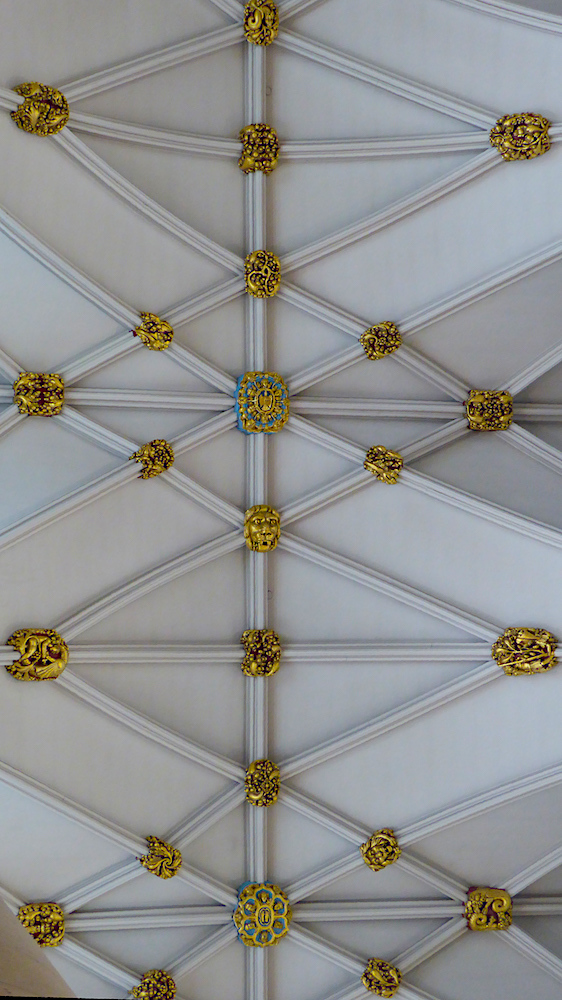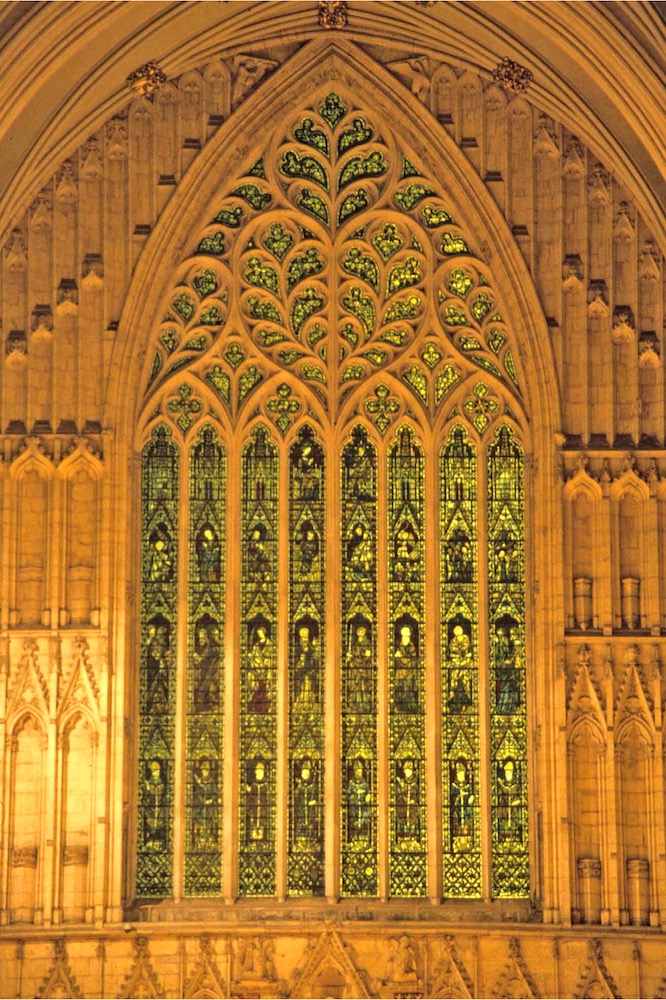Most of the photographs here were taken by Contributing Photographer Colin Price, with two exceptions: the original photograph on this page, that of the rood screen (top right), was uploaded to the original web-page in 2005 by our founding Editor-in-Chief George P. Landow; and the one of the nave roof (bottom right) was taken by our regular contributor from York, Rita Wood. The text too is collaborative. You may use the images without prior permission for any scholarly or educational purpose as long as you (1) credit the gallery and the photographer, and (2) link your document to this URL in a web document or cite the Victorian Web in a print one. Click on all the images to enlarge them. — Jacqueline Banerjee



Left to right: (a) Looking down the length of the nave. (b) The Sanctuary. (c) A three-quarter view of the Rood Screen.
The long history of the Grade I listed Minster is reflected in its range of Gothic styles. Colin Price points out that the nave, built mostly in the first half of the fourteenth century, is still in the Decorated style, while the east window is an outstanding example of the Perpendicular style. The screen brings us much closer to the present. This, as George Landow explained in the original web-page, is Sir Robert Smirke's stone version of the fifteenth-century wooden one badly damaged in a fire of 1829. Other wooden furnishings here — the pulpit, Archbishop's throne and choir stalls — were all designed by Smirke as well, not as exact copies, but at least with the intention of recapturing "the spirit of what was burnt" (Pevsner and Neave 144).


Left: Closer view of the east window. Right: The wall arcade of the nave, with canopied trefoils and cusped arches, from the earlier half of the fourteenth century.


Left: The vast north aisle. Right: The elaborately arcaded south transept, with its later rose window.
.


Left to right: (a) Nave ceiling. (b) The vault of the early fifteeenth-century central tower, not completed until the 1470s — at 190 feet above the pavement, the largest or at least one of the largest medieval crossing areas. Price reminds us that vaulting on such a scale was a huge technical accomplishment, even if in wood. (c) Quire ceiling.
The Minster has suffered more than one fire. Also dating from the nineteenth-century, writes Rita Wood, are the main ceilings of the quire (that is, the choir, or chancel) and nave, replaced after fires in 1829 and 1840 respectively. Like the Chapter House ceiling, they are of wood because the span of the building was too wide for a stone roof.

The great west window, eight lights with
a central heart-shaped design in the
tracery, dating from about 1338.
York Minster is a magnificent building, important for telling us "a more consistent and complete story of the Gothic styles in England than any other cathedral" (Pevsner and Neave 126). But later architects also played their part: Sir Robert and Sydney Smirke did it great service during their stewardship by repairing the damage done by time and fire, and their restoration work was followed by that of G. E. Street (1868-81), and G. F. Bodley (1862-1907). It is worth remembering, too, that among the hugely admired medieval stained glass windows at the Minster are replacements of several in the transept chapels, including those depicting St George, St Peter and St Paul, by the firm of C. E. Kempe (Stained Glass at York Minster 86). In such ways the Victorians left their own mark on the Minster, helping to preserve for future generations not only a living house of worship, but an embodiment of our rich cultural and spiritual heritage.
Links to related material
- The Minster seen from outside
- The Victorian Development of Duncombe Place, York (1859-64) — with its aim of providing an open view of the Minster
- The adjoining Chapter House, restored by Sydney Smirke
- Minton Tiles in the Chapter House
- North aisle reredos by George Tinworth, for Doulton
- Stained glass window depicting St Peter, by C. E. Kempe
- Stained glass window depicting St Paul, by C. E. Kempe
- Memorial by Edward Richardson for Officers and Men of the King's Own (Yorkshire) Light Infantry
- Memorial by John Birnie Philip Lt. Col. Willoughby Moore
Bibliography
Cathedral Church of St Peter, York Minster. Historic England. Web. 25 April 2022.
The Cathedrals's own excellent site, which includes a detailed history, tour, and bibliography.
Pevsner, Nikolaus, and David Neave. Yorkshire: York and the East Riding. New Haven and London: Yale University Press, 2002.
Stained Glass at York Minster, 2017. Available online. Web. 25 April 2022.
Created 21 December 2005
Last modified 25 April 2022